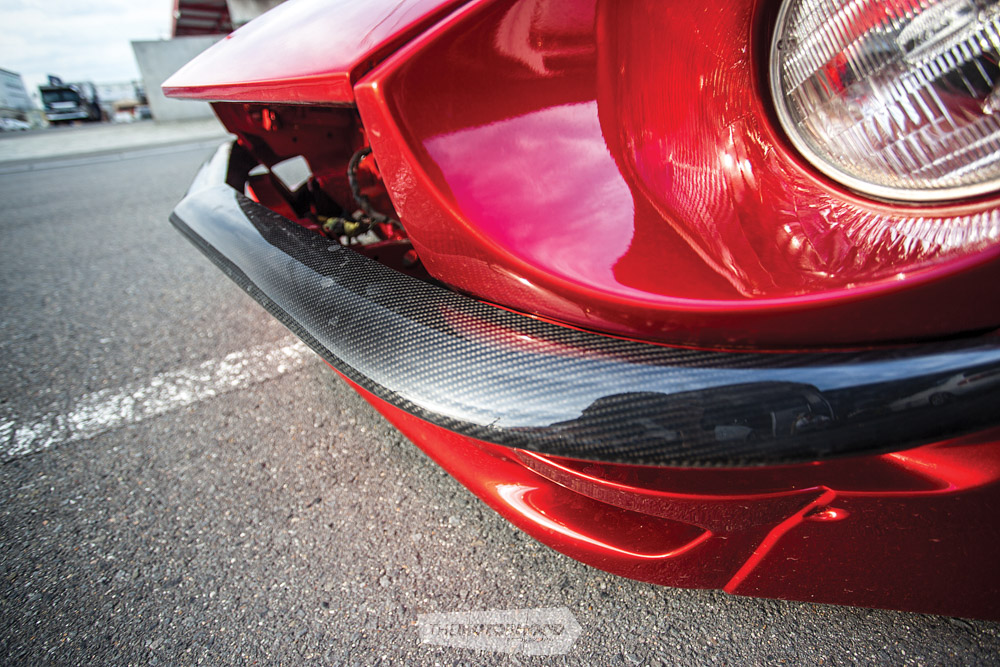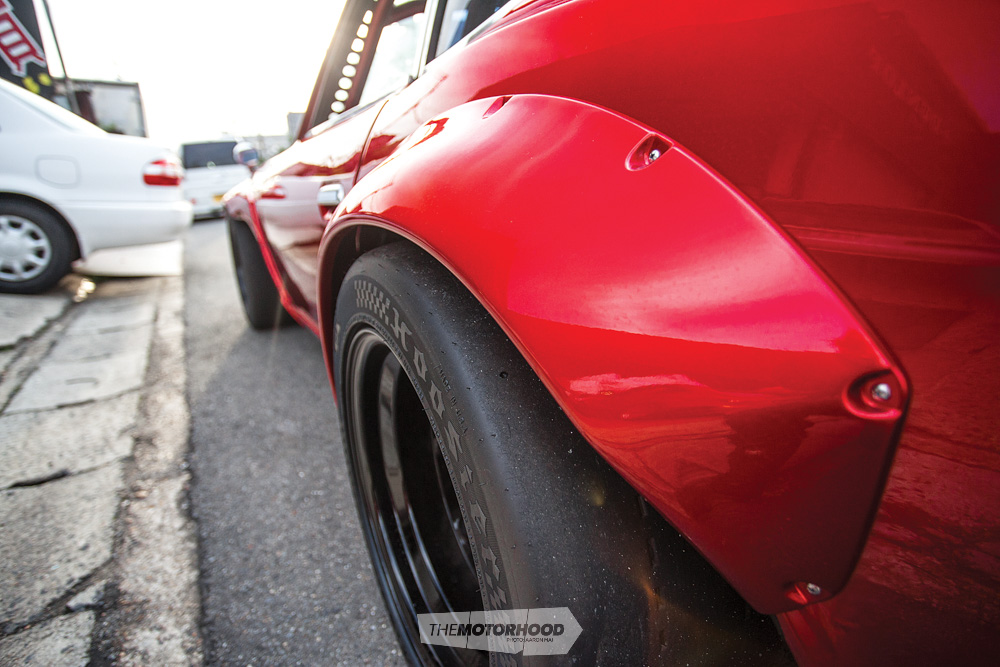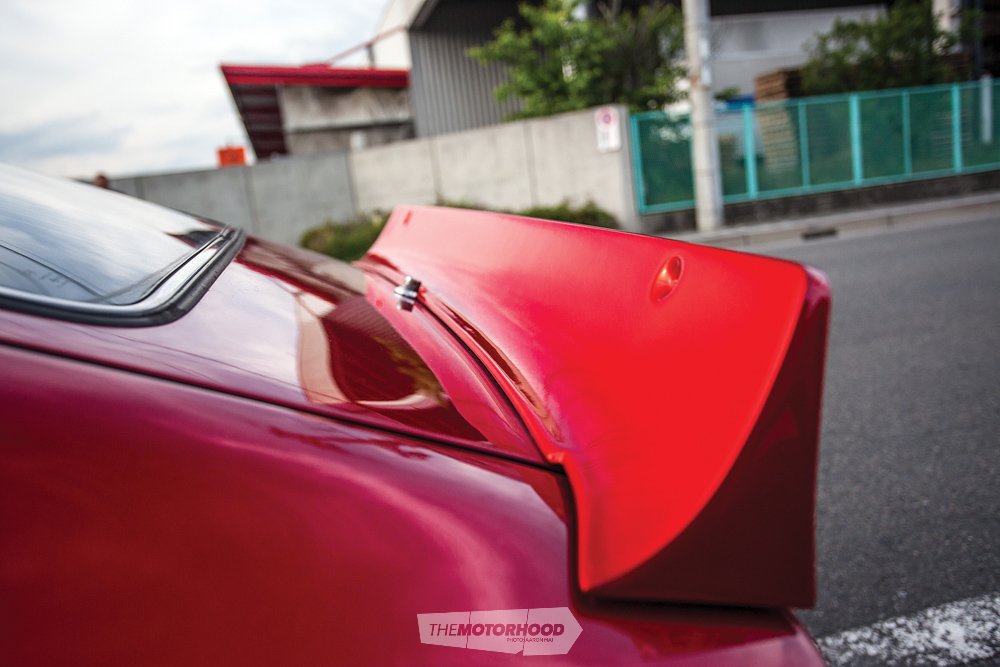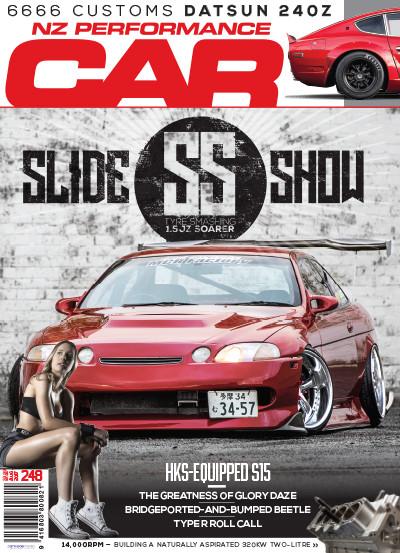Kei Miura’s personal S30 proves that you can mix the old and the new with great success
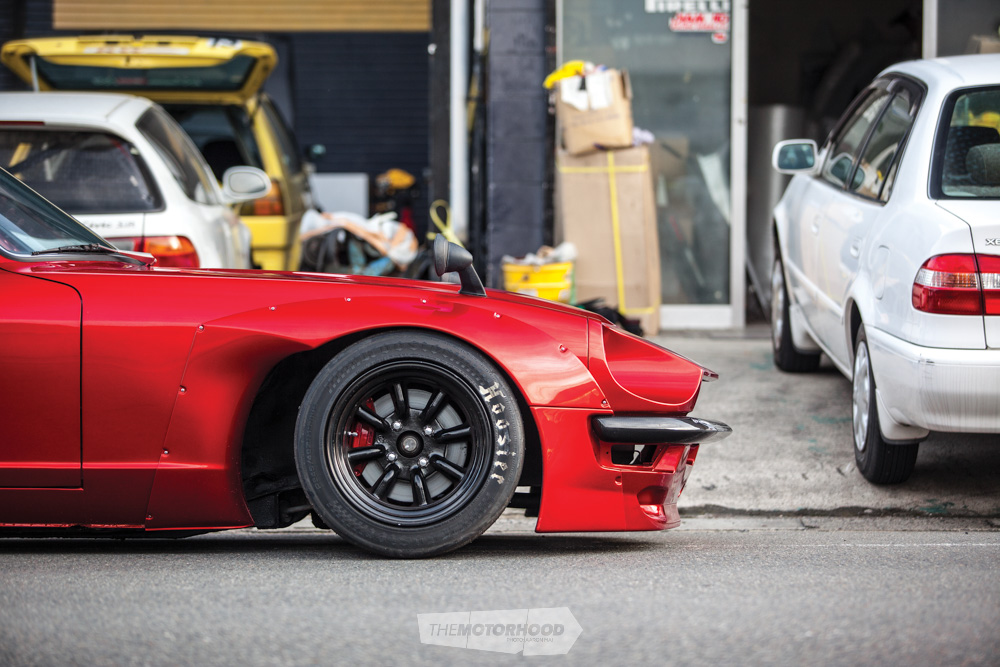
Kei Miura has long been a leader and a trendsetter when it comes to automotive styling, and, like any leader who dares to step out of the box, he has taken his fair share of heat. But the mark of a true leader is shunning those naysayers, believing in your passion and continuing to create complete standouts, and that’s what he’s done with his personal TRA-Kyoto S30Z, a model many seem to stay clear of reimagining — especially when it comes to body styling. You just can’t throw a new-school aesthetic at an old-school car and expect it to work, which is why Miura-san, with his less-is-more approach, is the perfect candidate to tackle a base such as the S30.
His talent for crafting new kits on iconic old-school chassis isn’t born out of some fancy digital know-how and good luck with a CAD program but, rather, a pure appreciation and wholehearted involvement in the scene, which many know very little about. “My automotive roots are all old school, and, at times, a little questionable. My start was out on the Kanjo loop,” he says. The king of fibre-reinforced plastic (FRP) has a background that consists of a stripped-out EF Civic with a transplanted B16A at redline, and without plates, out on the Osaka Kanjo highway system. “We used to sneak through the toll gates right behind another car to avoid the steep toll charges,” he tells me, “then we had all night to race the loop. We wore hockey masks to cover our faces from the cameras, and, when we had to make a run for it, we would sneak up behind another car to escape out the toll gates.”
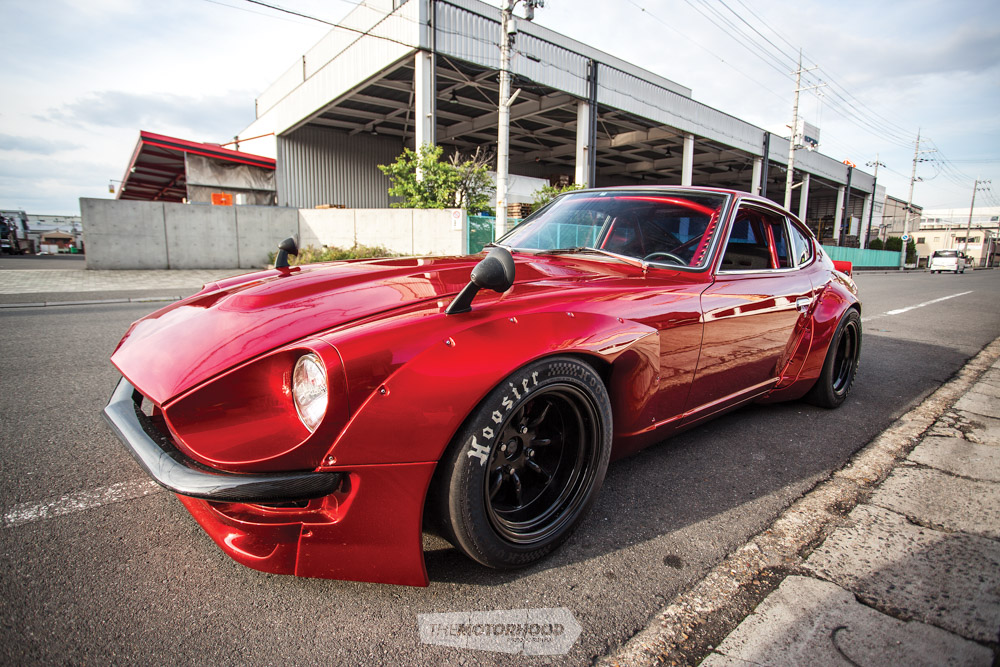
He’s an old-school pioneer in every aspect, and his respect for those who have gone before him, and the scene that he remembers fondly, is where he draws inspiration from for the products he produces. “My kits have a modern twist on them to fit into the current scene, but the roots of why they look the way they do are purely down to the glory days,” he says. “Old-school cars are what inspire me, and, when many said the Z was an untameable platform, I wanted to prove them wrong.”
The kit, despite its minimal flavour, is still aggressive, while keeping the beautiful lines of the S30 relatively intact. This was a large reason for the success of this kit on the Datsun’s body line, but the ribbon that ties the whole car together is what it sits on. “I have a strange way of designing my kits: I don’t start with the bodylines; I start with the wheels,” he says, laughing, while exhaling cigarette smoke. So, on this chassis, he fitted a set of Racing Service Watanabe R17s in 15×9 inches (-13) up front and 15×10 inches (-25) in the rear, to fill the guards. In true racing spirit, Miura-san has wrapped those aluminium shoes in Hoosier tarmac rally tyres pumped outwards courtesy of 30mm spacers to fill the short-cut fenders. The perfect ride height? Miura keeps tight-lipped: “I have some new tricks up my sleeve for the way my classic cars sit.” What he is alluding to are custom air cups and shako chomei, which loosely means ‘custom suspension designed specifically to boso cars’.
Miura-san wanted the muffler rotated 90 degrees for a new-school spin on an old-school style

Once you get up close and personal, you’ll notice that the perfection is all in the details
With the perfect wheel-and-stance combo matched to the platform, the kit that then curves around it complements the original lines so well, while infusing a touch of aggression into the mix. From front to back, the flow of the kit fits the style of Japan’s OG sports car. The front lip vents are just big enough to feature, without detracting from the classic Z ‘face’, while the side skirts integrate smoothly into the original rocker panel shape. From a distance, everything works so nicely, but, once you get up close and personal, you’ll notice that the perfection is all in the details. A carbon bumper up front and a shaved, bumper-less rear end coupled with a duckbil spoiler ensure that the back doesn’t look too naked, and a cut-out section in the rear fender for the door isn’t even noticeable until you go to open it.
The colour is as striking as the form. It is the same four-stage coating that you will find on the Lexus RC-F — a silver base topped with clear coat, followed by translucent red, and then hit with an additional coat of clear. The final result is a mesmerizingly deep and radiant shade of red that complements the look of the car so well. Underneath the sloping bonnet, you won’t find an L24 in-line six but, rather, a 2.8-litre L-series bored and stroked to 3.2 and good for 238kW. Induction is handled by triple OER Racing side-draughts, while Miura turned to GReddy for the custom exhaust and insisted that he wanted the muffler rotated 90 degrees for a new-school spin on an old-school style.
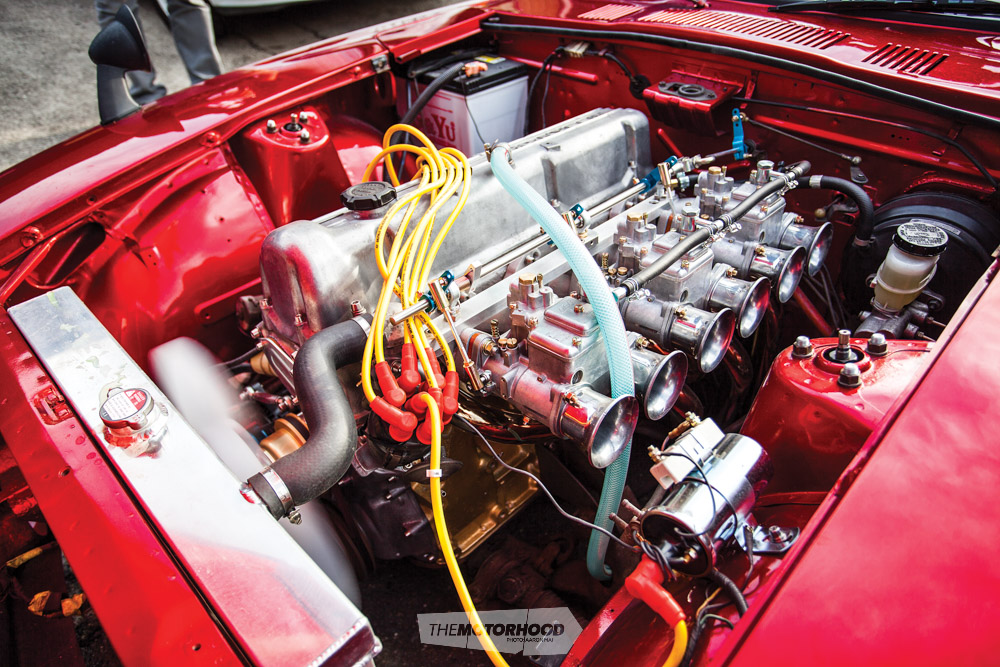
Like many traditional kyusha, the engine has been tuned with the intention of cruising highways while being equally at home revving hard up mountain passes. Inside the cockpit, Miura-san really has taken a minimalistic approach. The same vibrant RC-F red is mixed up with black leather accents, and, in true Kanjo fashion, there is no accommodating passengers — or much other interior trim, for that matter. A single black felt Quattro Sport bucket seat nestled into an original custom cage fabricated by Miura gives a rigid race-car feel to the office space. To break up the solid red, black leather-covered door cards maintain the classic feel, while, in front of the driver, there is a retrimmed leather dash complemented by a period-correct Datsun steering wheel, wooden shift knob, and well-used leather boots that are a timely reminder of the car’s vintage pedigree. “You don’t need to go over the top to create a custom car — remember what is important and focus on that,” Miura-san states.

Guys like Miura-san have had an active role in creating the scene we have today, and, in the beginning, they did it without hashtags, social media, or viral video, and that demands respect
He’s from an age when simplicity and form were as important as function, and Miura has continued to install this ethos in all his creations. “In the old days, car tuning was all about driving and enjoying what you had, and you made your car your own, too. We didn’t have phones or the internet — our cars were the only real source of fun,” Miura-san explains. With the fast pace at which automotive tuning runs these days, it is nice to know some of the old school are still creating, and tuning, with a nostalgic element to their work. Coming from the era when automotive tuning culture was born counts for a lot and losing sight of our roots is a mistake.
This TRA-Kyoto S30 isn’t born of modern-day social-media fandom; neither is it another cut-and-paste CAD drawing. It is a neo-bosozoku twist on the golden era of tuning. We have to remember that guys like Miura-san have had an active role in creating the scene we have today, and, in the beginning, they did it without hashtags, social media, or viral videos, and that demands respect.

This article originally appeared in NZ Performance Car magazine issue No. 248 — to get your grubby mitts on a print copy, click the cover below





